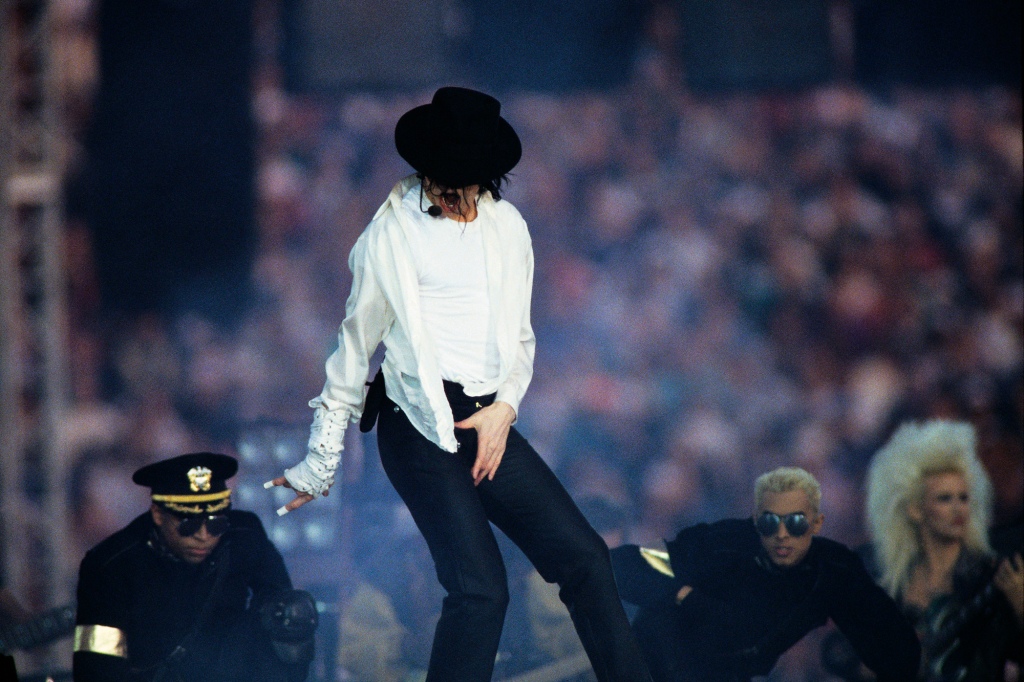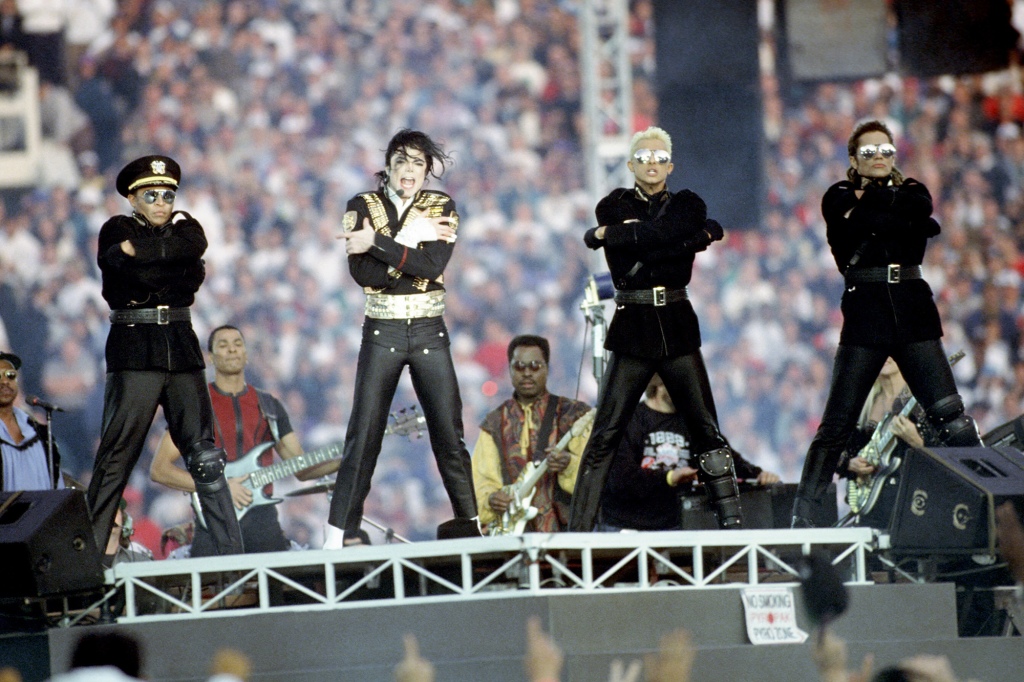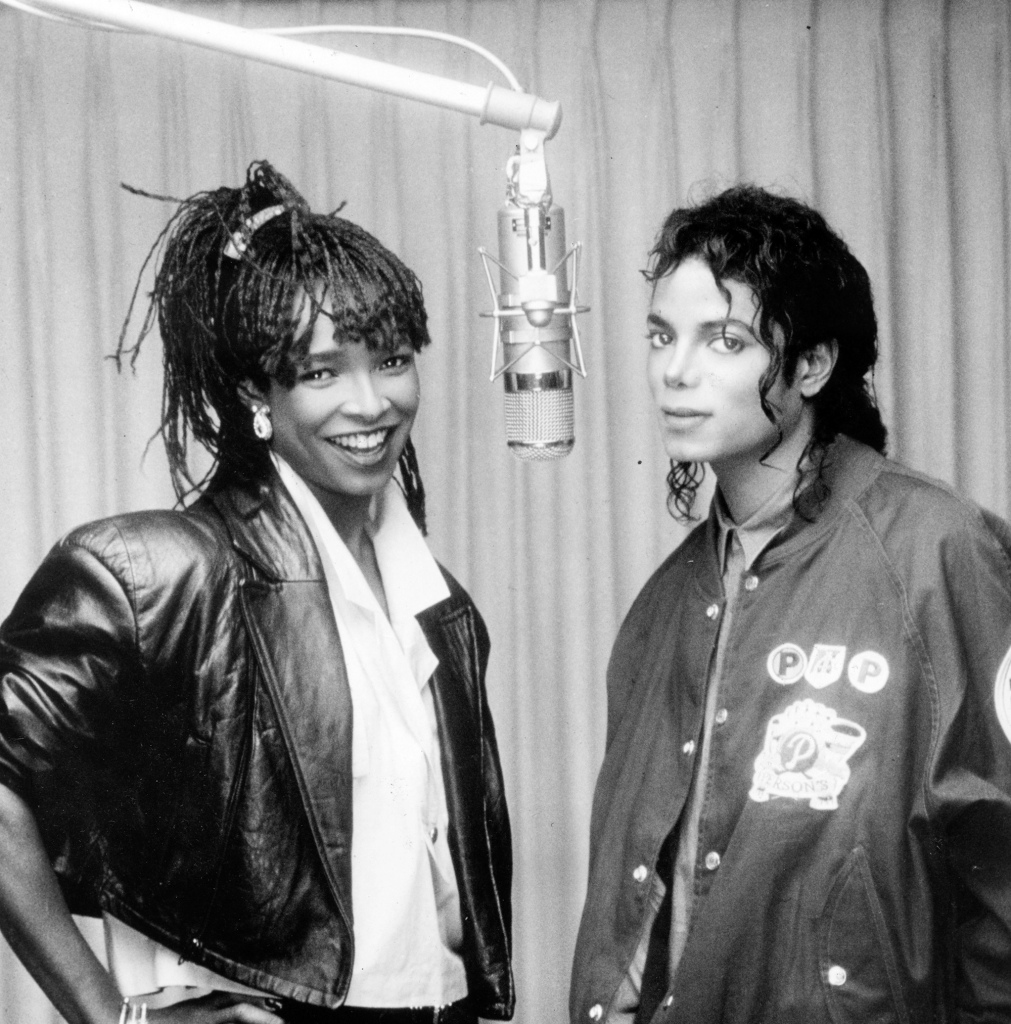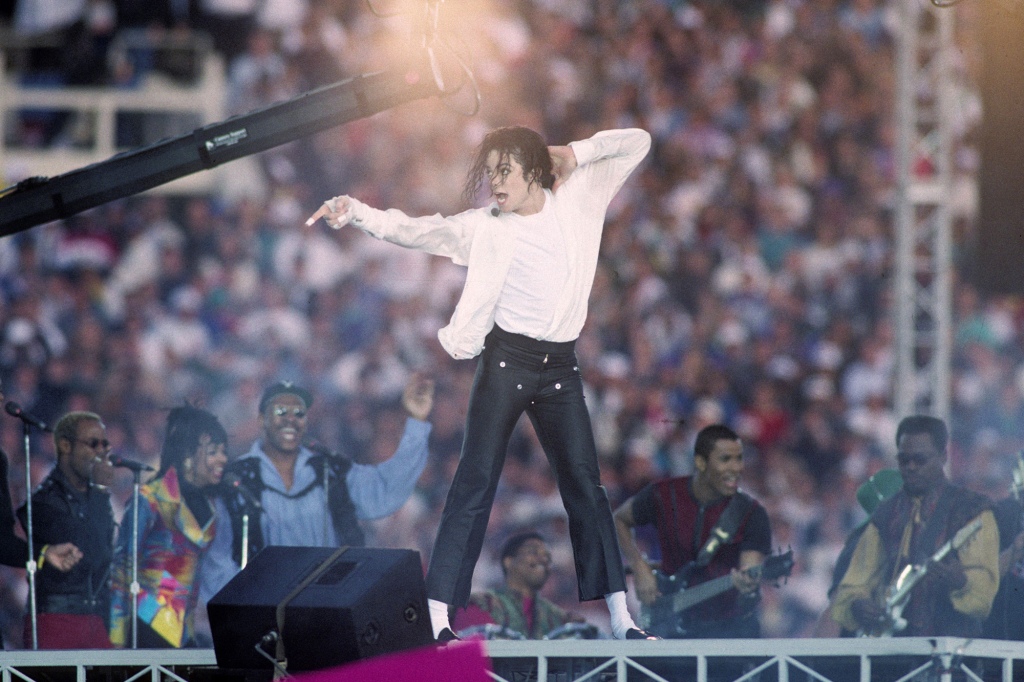Michael Jackson changed the Super Bowl halftime game in 1993
On “Man in the Mirror,” his 1988 No. 1 smash, Michael Jackson famously set out to “make that change.”
And after the King of Pop shot up from below and hit the stage at Super Bowl XXVII 30 years ago on Jan. 31, 1993, the halftime show would never be the same. Taking in the history-making moment at the Rose Bowl in Pasadena, California, he remained frozen in a mannequin pose — save for one quick flip of his head — for some 90 seconds.
“Michael said to me, ‘Don’t cue my musicians until my hands go up and remove my glasses,’” Don Mischer — who produced and directed the halftime show — told The Post. “So he pops up, the crowd’s going crazy, about 30 seconds goes by, and he doesn’t move. Now I’m in the [production] truck screaming, ‘Come on, Michael! Let us go, man, and give us the cue!’ Finally, his hands came up, he touched his glasses, and we were off and running.”

Three decades later, the Super Bowl halftime show has never looked back, booking everyone from rock royalty such as Prince and Bruce Springsteen (both of whom also worked with Mischer) to today’s pop superstars including Beyoncé and Rihanna — the “Umbrella” singer will headline this year’s big game on Feb. 12. But before Jackson ruled the Rose Bowl — midway through the Dallas Cowboys’ win over the Buffalo Bills — the halftime show was hardly must-see TV, featuring marching bands, drill teams and nonprofit groups such as Up With People.
In fact, in 1992, viewers passed on the cornball “Winter Magic”-themed halftime show featuring figure skaters Dorothy Hamill and Brian Boitano and dancers dressed as snowflakes to watch a special counterprogrammed episode of the sketch comedy “In Living Color.”

“They flipped over to Fox, and the trouble is they never came back [to CBS],” said Mischer. “This was a major wake-up call for the NFL. They realized that a Super Bowl halftime show could no longer be filler in the middle of America’s premier football game.”
Determined to tackle its halftime-show problem, the NFL hired Radio City Music Hall Productions to find a big name for the 1993 Super Bowl, and as a result booked Jackson at the height of his pop reign. But MJ would only agree to do it if Mischer produced and directed the show.
“Michael and I had done many shows together, including ‘Motown 25,’ where he first did the moonwalk,” said Mischer. “But there was a lot of ‘Only a sports director could direct this.’ And Michael, who really knew how to get what he wanted, said, ‘Nope — Don’s gotta do it.’”

But there was one request that even Jackson was denied.
“I will never forget the first meeting when we agreed to do this,” said Mischer. “Michael comes into the room; he’s very gentle and friendly. And the first thing he said was, ‘I’d like to move the game three hours [back] so my halftime show can be in darkness.’ And I said to Michael, ‘That means that, in the Central and Eastern time zones, it’s gonna be like midnight if we do that. So we can’t do that.’”
And although Jackson reportedly asked for $1 million to perform, he — like every single halftime show headliner since — was not paid. “But,” Mischer noted, “Michael got $35 or $40 million worth of exposure.”
Mischer also warned Jackson about doing too much of his trademark crotch-grabbing for the family audience — although he did it anyway. ”I said, ‘Be prepared that you might get some some negative feedback on that.’”

Background singer Siedah Garrett — who had co-written “Man in the Mirror” and duetted with Jackson on “I Just Can’t Stop Loving You” — was in the middle of the “Dangerous” tour with him, but wasn’t particularly pumped about playing the Super Bowl.
“I wasn’t thrilled about it at all,” she said. “I was like, ‘OK, we gotta do this. It’s a job.’ And it turned out to be so much more than that. I didn’t realize how special it was.”
Rehearsing under a giant tent in the Rose Bowl parking lot in the week leading up to the big game, Garrett said that Jackson “wasn’t nervous — he was excited.” Still, he was well aware that football fans were not his normal crowd.
“He was worried about the good ol’ boys and how he was gonna come off to them,” said Garrett. “He was more concerned about entertaining those football guys who were just there to see the game, didn’t care who was on at the halftime show. They would usually leave and go to the bathroom or do whatever. But nobody left their seats with this halftime show.”

Without a doubt, Jackson’s set — which kicked off with “Jam” and then went into “Billie Jean,” “Black or White” and “We Are the World” before finishing with “Heal the World” — turned the Super Bowl halftime show into its own blockbuster event, marking the first time that ratings increased from the game’s first half to its second half as viewers watched worldwide.
“The difference between Michael Jackson’s performance at the Super Bowl and everybody else’s before him was that Michael’s became global,” said longtime MJ dancer/choreographer Travis Payne. “The whole world cared — not just America.”
And when Beyoncé paid tribute to Jackson with an outfit honoring his Super Bowl look in 2016, it was clear that the late icon’s legacy lives on 30 years after that historic moment midway through the Dallas Cowboys’ rout of the Buffalo Bills.
“Beyoncé, Janet — everyone after was conjuring up MJ,” said Garrett. “It warms my heart.”
Read the full article Here


